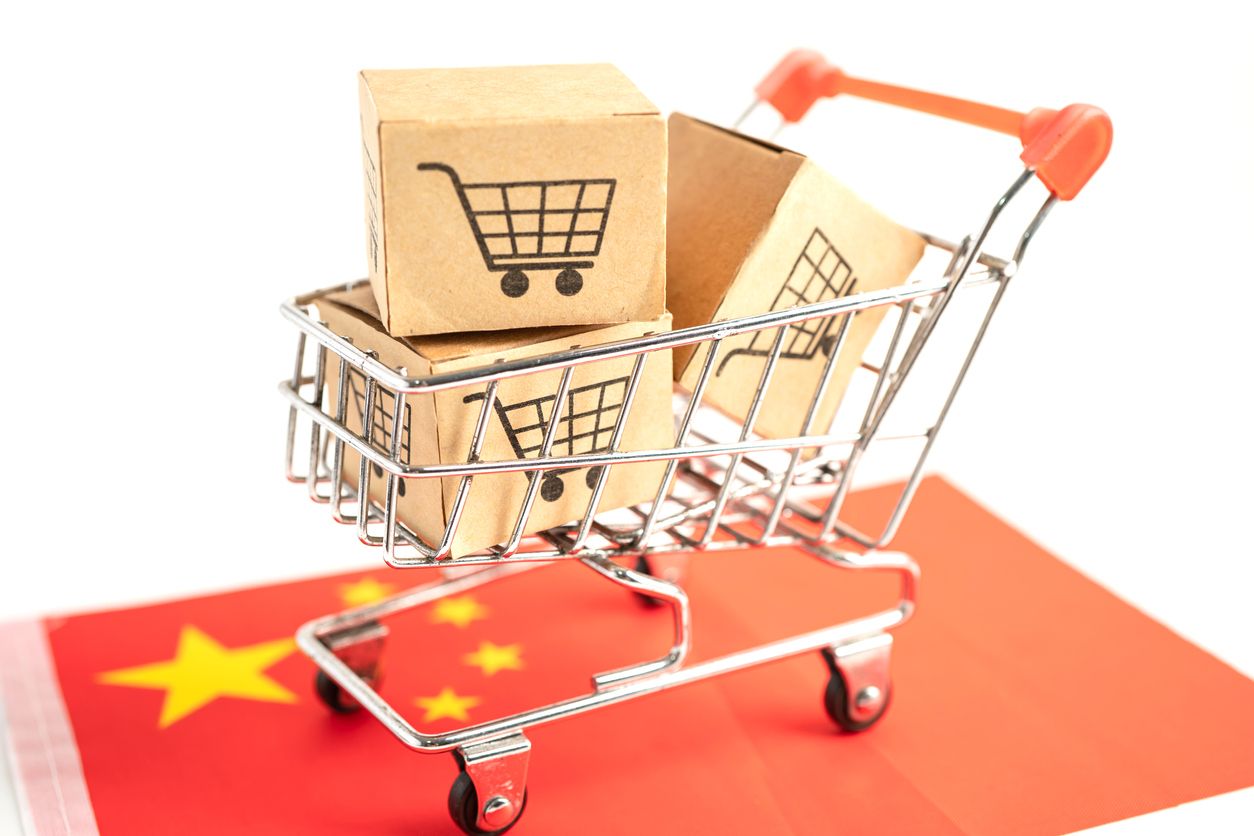
China’s e-commerce upstart came to the party late but still caught up with Alibaba and JD.com
As of March 2021, roughly a year into the global COVID-19 pandemic, e-commerce platforms were racking up record numbers as business moved online to compensate for the closure of physical storefronts. Alibaba, Amazon, and JD all benefitted from the pivot online, which was reflected by all-time high share prices.
However, the company that signed up the most users to top the list at 824 million was none of the above. It was Pinduoduo (拼多多).
Rise to prominence
When Colin Huang founded Pinduoduo in 2015, China’s e-commerce market was already dominated by the two giants, Alibaba and JD, who occupied 80 percent of the market by Gross Merchandise Value (GMV). What Huang did to differentiate Pinduoduo in an industry that had become defined by the group purchase model was his audacious goal to invert capitalism, as articulated in his 2017 Weibo blog post just months before the company’s IPO:
“Imagine 1,000 people think during the summer that they want to buy a type of down jacket in the winter. They place a joint order to a manufacturer and are willing to pay 10 percent of last year’s price as deposit. In this case, the factory may very willingly give them a 30 percent discount, because the factory now has certainty of demand from the joint order, which it did not have before. This certainty can translate into an ease of production during slow production seasons and confidence when purchasing raw materials. Factories can even further sell this certainty to upstream and accessory manufacturers in exchange for further reduction in factory costs.”
This certainty, according to Huang, was to be the founding secret sauce at Pinduoduo, akin to the rich (manufacturers) purchasing insurance (certainty of order) from the poor (buyers), creating a reverse relationship in the capitalist world.
From the time it listed on the NASDAQ in July 2018 to December 2019 – a mere 18 months – Pinduoduo boasted 585 million active buyers to surpass JD. By the end of 2020 that figure had jumped to 788 million, with revenue climbing to some US$9.1 billion, which was about double the previous year’s figures.
Much of Pinduoduo’s success can be attributed to the power of social media, where shoppers’ experience could produce an outsized effect on the popularity of products and services. Xin Yi Lim, the company’s executive director, explains it this way: “…[G]etting [your friends’] inputs often gets lost in online shopping [which] becomes very singular, very efficiency driven, but sometimes you do welcome insights and inputs from your friends. So this is potentially where you can have a ripple-on effect.”
Buyers could join others to form a team and buy a product i.e., ‘team purchase’. There were two prices – the individual purchase price or the team purchase price, which was lower. Only two people were needed to form a team purchase. Because merchants were able to offer more competitive prices by aggregating demand through team purchase, there would always be promotions on Pinduoduo, thus making the platform extremely sticky.
The team purchase approach also improved supply chain efficiency because user preferences were directly channelled to merchants, sidestepping the distributors and other intermediaries, therefore allowing them to adjust their production and sales plans accordingly. Two positive outcomes were generated: the price tag for buyers was lowered, but at the same time, it also raised profits for the manufacturers.
Headwinds and the way forward
Pinduoduo gained popularity for its value-for-money proposition, but it made further inroads by capitalising on the COVID-19 pandemic with the introduction of Duo Duo Mai Cai (多多买菜 or ‘Duo Duo Buy Groceries’ in Mandarin) which flipped ‘last-mile’ logistics challenges in delivering fresh groceries to consumers into a self-collection option for a price sans freight costs.
However, there were challenges lying ahead. Alibaba and JD had adopted the Consumer-to-Manufacturer (C2M) model exemplified by the ‘team purchase’ approach, allowing consumers to bypass third-party sellers. In the groceries space, Alibaba had added almost 500 brick-and-mortar hypermarkets to its existing 200-odd Freshippo supermarkets by acquiring Sun Art Retail in late 2020 and connecting them to its e-commerce platforms. JD had partnered US retail giant Walmart to run more than 400 supermarkets and grocery stores across China.
Meanwhile, Pinduoduo remained in the red with a Q1 2021 loss of over US$443 million, due in large part to sustained marketing spending and intensive investments in technology such as smart logistics and precision farming. Huang stepped down as CEO in July 2020 and as chairman in March the following year, with Chen Lei, a member of the firm’s founding team and formerly the Chief Technology Officer, taking on both roles. With this transition, management placed more emphasis on the nurturing of a new generation of leaders to take Pinduoduo forward.
How should investors see this series of manoeuvres by Pinduoduo, given the intense competition and volatile conditions? Would this be Pinduoduo’s road to profitability? What would be its ‘end game’?
This is an adapted version of the SMU Case, “Pinduoduo: Raising an 824 million-strong ecommerce empire under six years”. To see the full case, please click on the following link: https://cmp.smu.edu.sg/case/5306”.